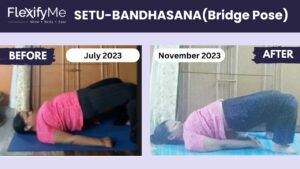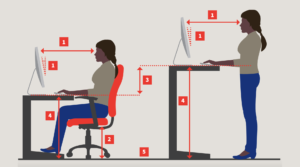Table of Contents
Carpal Tunnel Syndrome: A Deeper Dive into Symptoms, Causes, and Holistic Treatments
Understanding the Condition
Imagine your wrist harboring a narrow passageway, similar to a tunnel carved through a mountain, designed not for vehicles but for the vital neural and tendinous traffic to your hand. This is your carpal tunnel, and when the median nerve within it is squeezed or compressed, it kicks off a cascade of symptoms known as carpal tunnel syndrome (CTS). It’s not just about fleeting numbness or an odd tingling sensation; it’s a persistent reminder from your body that something’s amiss in the nerve’s pathway.
When you face the numbing pain or the tingling spells, especially when these sensations hijack your sleep or disrupt your daily activities, it’s a signal to pause and listen to your body. Millions find themselves in this predicament each year, making CTS a condition that demands attention and understanding.
Symptoms Unpacked and Causes Unraveled
The narrative of CTS often begins quietly, with symptoms so mild they might be brushed off. But they evolve, gradually intensifying, especially if your day-to-day life involves actions that repetitively stress your wrist. From the subtle onset of numbness to the pronounced disruption of hand function, the progression can be slow yet relentless.
The pain narrative varies — it could be a sharp, jarring interruption or a dull, lingering ache. But it’s not just about pain; it’s about the peculiar weakness or clumsiness that might make a coffee cup seem like a heavier lift than usual.
Now, what sets the stage for this scenario? It could be an array of culprits — from the repetitive strain of your daily grind to an underlying arthritis or even a past wrist injury playing a lead role.
Yoga: A Gentle Embrace for Your Wrist
The original content tiptoed around yoga’s potential in managing CTS, but let’s delve deeper. Yoga isn’t merely an exercise; it’s a dialogue with your body, offering movements that speak the language of gentle healing and strength. Integrating yoga practices specifically curated for CTS can bring a new dimension to managing the condition, harmonizing the body’s narrative of healing with the rhythm of breath and movement.
Rich in Expertise, Steeped in Trust
As we journey through the complexities of CTS, it’s essential to anchor our insights in the latest research and expert knowledge. Drawing upon contemporary studies and expert opinions, we aim to offer a narrative that’s not only informative but also imbued with depth and credibility. The dialogue on CTS isn’t just about listing symptoms and treatments; it’s about understanding the interplay of various factors and recognizing the individuality of each experience.
Diagnosis, Physiotherapy, and Blending Yoga for Comprehensive CTS Care
Navigating Diagnosis and Tests with a Personal Touch
When it comes to diagnosing CTS, it’s more than just a series of tests; it’s about understanding your story and how your hands play a role in your daily script. Healthcare professionals begin this narrative by listening — to your symptoms, your routines, and when those troubling signs seem to take the spotlight. Physical exams and specific diagnostic tests, like Tinel’s sign or Phalen’s test, aren’t just procedures; they’re conversations between your body and the clinician, revealing the underlying plot of your condition.
Physiotherapy: A Guided Journey to Reclaiming Mobility
Introducing physiotherapy into the CTS narrative opens a new chapter of active recovery. It’s not merely about exercises; it’s a tailored approach, akin to a personal trainer for your wrist, designed to strengthen, heal, and enhance flexibility. Imagine a therapy that’s as focused on your individual recovery journey as a coach with their athlete, employing techniques that range from targeted exercises to innovative modalities, all aimed at restoring your wrist’s harmony and function.
Yoga: The Harmony of Movement and Relief
Building on the foundation laid out earlier, integrating yoga into your CTS management plan isn’t just an addition; it’s a fusion of tradition and science. Each pose, each breath is a step toward not just alleviating symptoms but also fortifying your wrists against future stresses. It’s about turning your focus inward, syncing breath with movement, and finding that sweet spot where comfort meets challenge — all while being gentle on your wrists.
A Symphony of Treatments for Holistic Healing
Combining yoga and physiotherapy offers a symphony of benefits, creating a harmonious balance between active engagement and mindful relaxation. This integrated approach doesn’t just aim to relieve the present discomfort but also to weave a tapestry of practices that fortify your wrists for the future.
Six Yoga Warm-Ups for Alleviating Wrist Pain and Enhancing Carpal Tunnel Syndrome Management
Yoga offers a gentle yet effective pathway to wrist health, particularly beneficial for those navigating the challenges of Carpal Tunnel Syndrome. Here, we introduce six yoga-inspired warm-ups designed to nurture and strengthen your wrists, potentially easing the symptoms of CTS.
1. Basic Wrist Therapy: This initial step involves simple yet profound movements to awaken and energize the wrists. Gently rotating the wrists, alternating directions, and incorporating light shakes can significantly enhance flexibility and circulation.

2. Tadasana Wrist Rotation: Integrating wrist rotations into the Tadasana (Mountain Pose) offers a grounding yet liberating exercise for the wrists. This gentle circling motion can be a mindful addition to your yoga practice, providing a foundational stretch and strengthening.

3. Uttanasana Wrist Extension: Transitioning into Uttanasana (Standing Forward Bend) offers an opportunity to gently stretch the wrists in a less conventional manner. By placing the backs of the wrists on or toward the floor, you create a gentle counterstretch that is both accessible and beneficial.
Need Image here

4. Wrist Pumps: Engage in a dynamic exercise by using the resistance of one hand against the other to move the wrist back and forth. This action not only enhances mobility but also builds subtle strength in the wrist area.

5. Anjali Mudra Variation (Reverse Phalen’s Test): Pressing the palms and fingers together firmly in front of the chest in Anjali Mudra can reveal sensitivities in the wrist joint. This variation acts as a diagnostic tool as well as a therapeutic exercise.

6. Phalen’s Test as a Warm-Up: Inverting the Phalen’s test into a gentle yoga exercise, you can press the backs of your hands together, promoting an alternative stretch that resonates with the needs of those with CTS.

Incorporating these exercises into your daily routine or as part of a broader yoga practice can offer significant benefits, particularly for those experiencing mild wrist pain or aiming to prevent CTS. Moreover, these warm-ups can serve as a gateway to a deeper yoga practice, harmonizing the body and mind while focusing on wrist health.
FlexifyMe recognizes the power of such integrative practices. By combining these targeted yoga warm-ups with advanced physiotherapy and AI-driven customization, FlexifyMe offers a personalized approach to managing and potentially alleviating the symptoms of Carpal Tunnel Syndrome.
Prevention, Outlook, and Navigating Life with Carpal Tunnel Syndrome
Proactive Steps Towards Prevention
While the shadow of CTS looms, there’s light in the form of proactive prevention. It’s about tuning into your body’s signals, respecting its limits, and adopting practices that nurture wrist health. Whether it’s through stretching, adjusting your workspace ergonomics, or embracing breaks during repetitive tasks, each action is a step toward safeguarding your wrists’ well-being.
A Future Bright with Possibilities
The journey with CTS varies, yet the outlook can be bright with informed choices and timely interventions. Armed with knowledge, supportive treatments, and self-awareness, many navigate this path successfully, maintaining active, fulfilling lives. Your story with CTS isn’t just about managing symptoms—it’s about thriving despite them, with each day bringing you closer to reclaiming your comfort and dexterity.
Living with Grace and Strength
Living with CTS is an ongoing dialogue with your body, listening attentively and responding with kindness. It’s about finding balance—acknowledging the limits while celebrating the capabilities. And when you need guidance, remember that paths like yoga and physiotherapy aren’t just treatments; they’re companions on your journey to wellness.
FlexifyMe: Your Ally in Wellness
Within this narrative of care, FlexifyMe emerges as a beacon of innovation and support, seamlessly integrating the wisdom of yoga and the precision of physiotherapy. With FlexifyMe, you’re not just receiving a treatment; you’re embracing a partnership tailored to your body’s narrative, enriched by AI’s precision and the human touch of expert care.
As we advance, let’s remember that each stretch, each movement, and each breath is a note in your symphony of well-being. With FlexifyMe, you’re composing a masterpiece of health, where technology and tradition dance in harmony, guiding you toward a future where your well-being is the priority.


